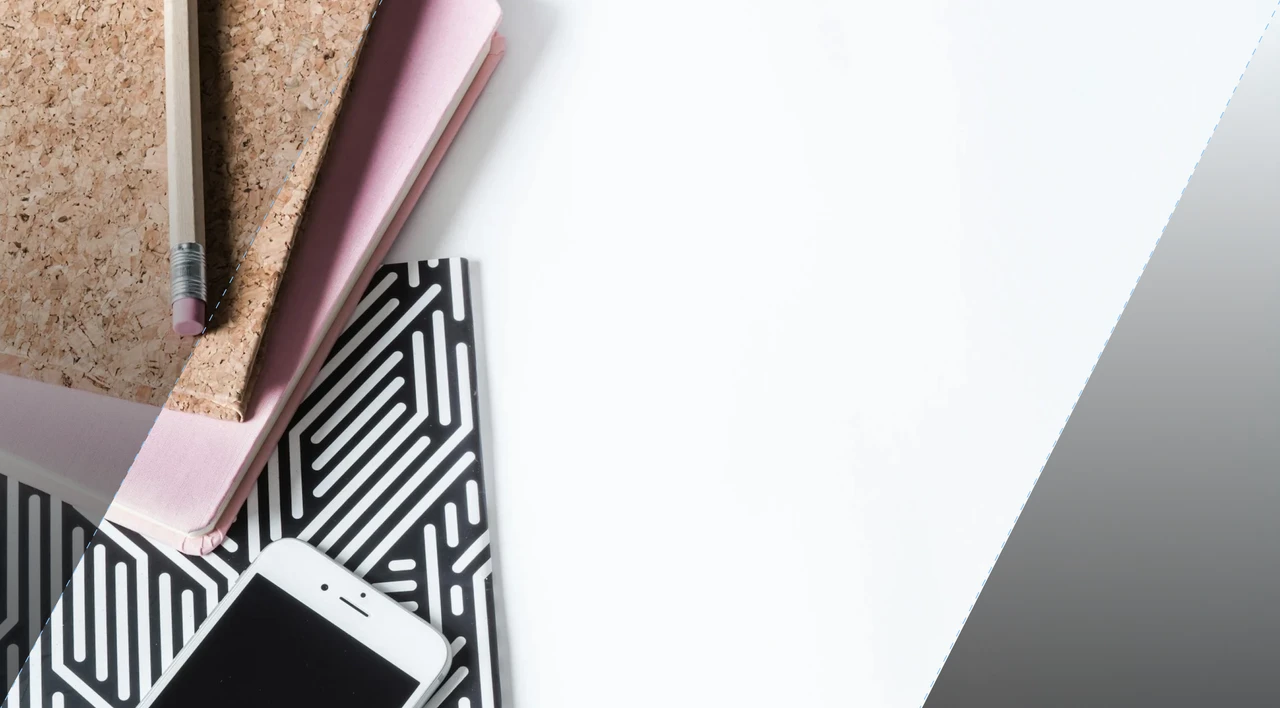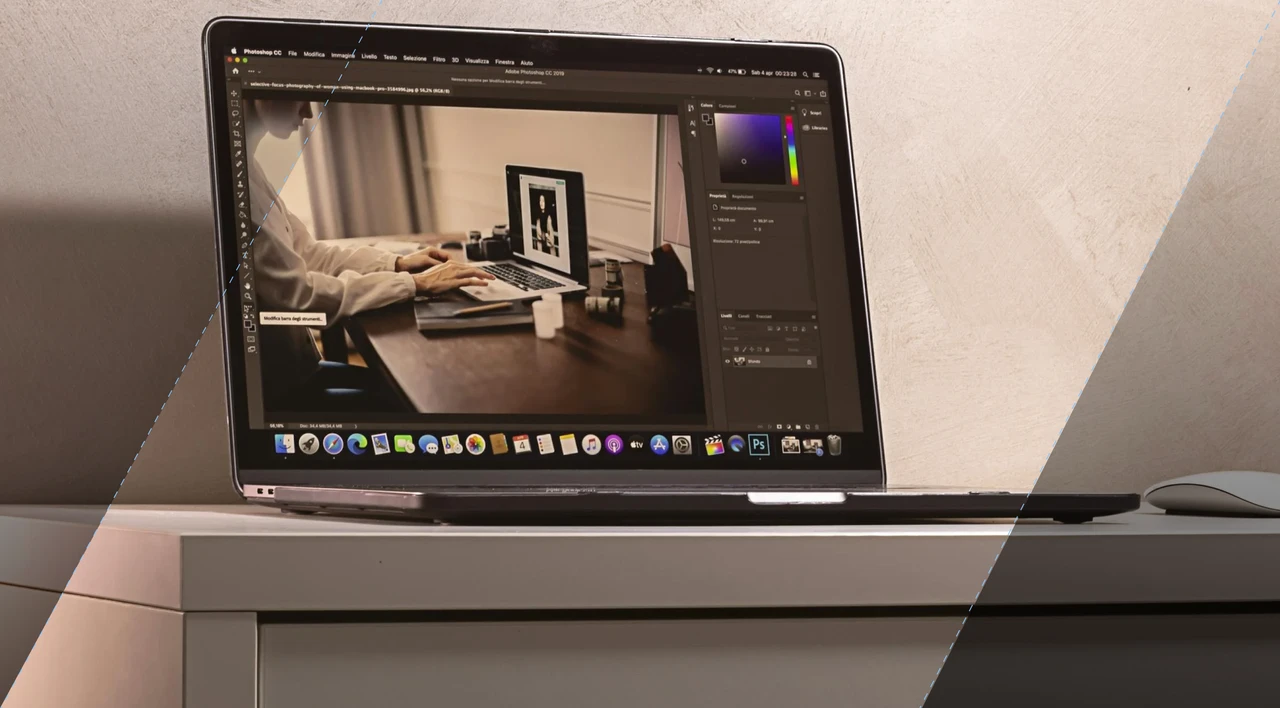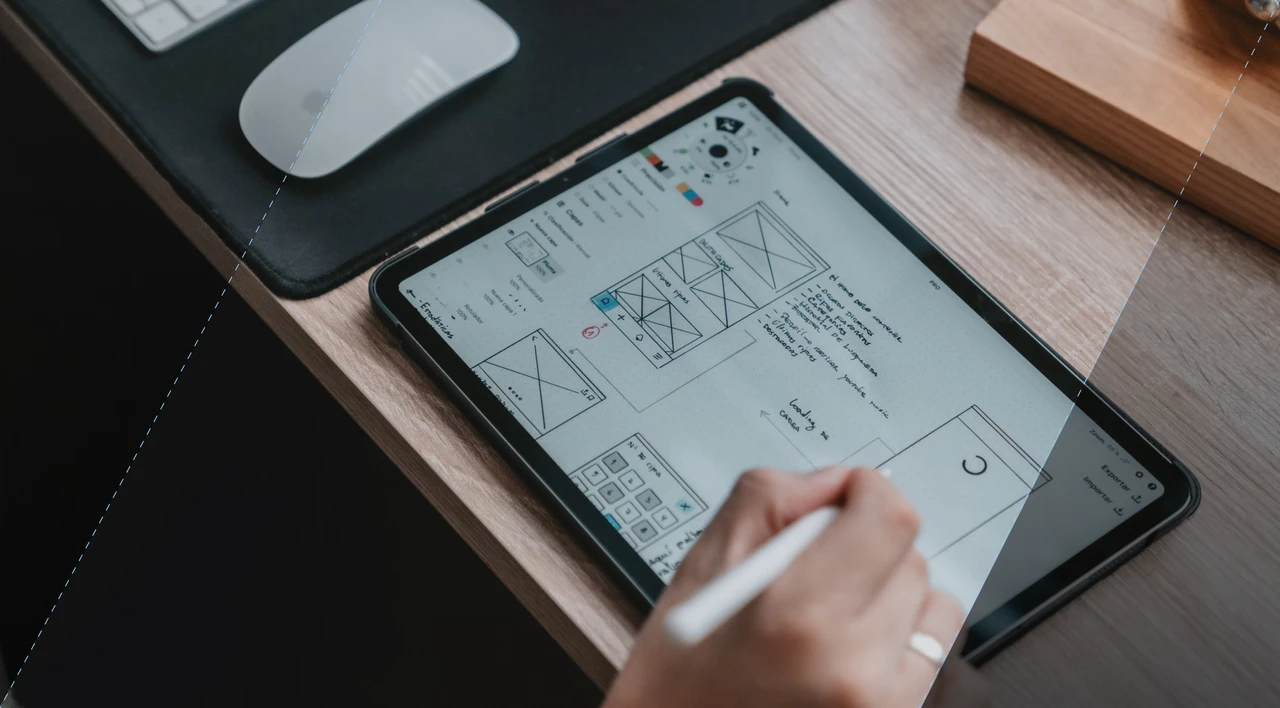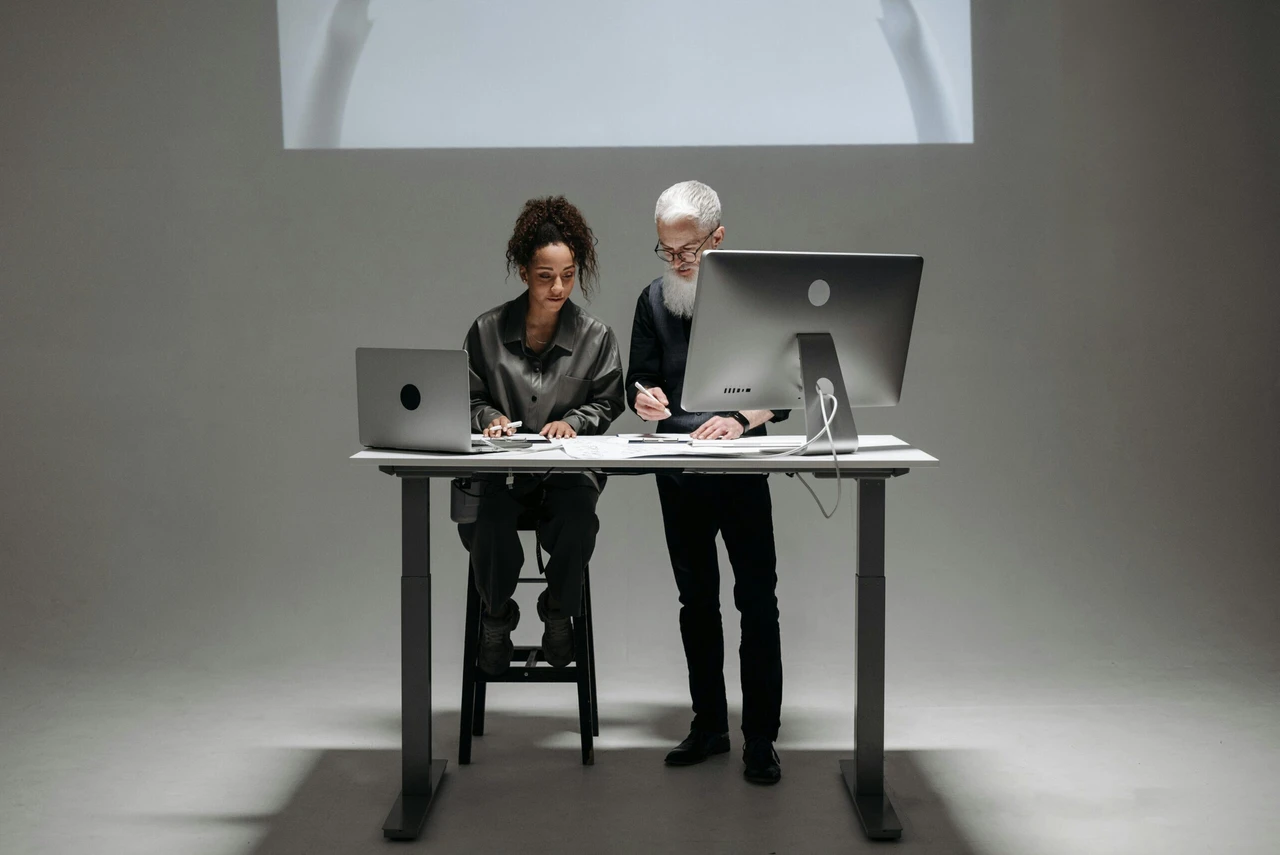Contents
Contents
Are you a UX/UI designer eager to delve deeper into structured design methodologies? As the global UI and UX Design Software market surges, expected to expand at a remarkable CAGR of 23.37% and reach $4 billion by 2028, understanding frameworks like the Middle Years Programme (MYP) Design Cycle becomes increasingly crucial.
In the dynamic landscape of design, mastering methodologies like the MYP Design Cycle offers a strategic advantages. This framework, blending design thinking with iterative refinement, empowers designers to navigate complex creative journeys systematically, ensuring that each step from ideation to implementation is thoughtfully considered and meticulously executed.
In this article, we will explore the intricacies of the MYP Design Cycle, uncovering its core principles, and unveiling how UX/UI designers can harness its power to craft compelling and user-centric digital solutions.
Key Takeaways:
- The design cycle is a methodology that guides designers through the iterative and cyclical design process.
- It combines design thinking and iterative design to ensure that every aspect of a design is thoroughly explored, refined, and improved.
- The design cycle consists of four main steps: Plan, Develop, Create, and Evaluate.
- Each step involves various substeps that help designers research, brainstorm, develop ideas, create prototypes, and evaluate and improve designs.
- The design cycle provides a structured approach for designers and enables them to create innovative and user-centric designs.
What is the MYP Design Cycle?
The MYP Design Cycle is a structured framework used in various disciplines, including software development, to guide the design process from conception to implementation. In software development, the MYP Design Cycle helps custom software developers systematically approach the creation of digital products, ensuring thorough planning, iteration, and refinement.
The design cycle typically consists of the following stages:
Inquiring and Analyzing
Inquiring and analyzing is an integral part of the design process. In this initial stage, designers seek to solve problems by first understanding the problem space through conducting research, gathering requirements, and analyzing user needs. For software development, this may involve studying existing systems, identifying pain points, and defining project objectives.
UX designers delve into user research, conducting interviews, surveys, and usability testing to gain insights into user behaviors and preferences. By analyzing data and gathering stakeholder input, designers can define clear project goals and establish a solid foundation for the design process.
This diligent inquiry and analysis phase serves as the bedrock for problem-solving and innovation, enabling designers to uncover latent user needs, anticipate challenges, and envision transformative solutions.
Developing Design Ideas
The development phase is where creativity flourishes as the whole design team works together to generate and refine design concepts and specific features. In software development, this stage may involve ideating solutions, sketching wireframes, and creating prototypes to visualize the proposed system’s functionality.
UX designers leverage design thinking methodologies, such as brainstorming sessions, design sprints, lightning demos, or four-step sketches, to explore different approaches and generate innovative ideas. Collaborative ideation sessions foster creativity and allow designers to explore a wide range of possibilities before selecting the most promising concepts to move forward.
Creative Design Phase
Once design ideas are solidified, designers transition to the creation phase, where they bring their concepts to life. In software development, this involves writing code, implementing features, and building user interfaces based on the finalized designs.
UX designers focus on crafting intuitive interactions, designing visually appealing interfaces, and ensuring seamless user experiences. Prototyping tools and design software are essential in this stage, enabling designers to iterate rapidly and refine their creations based on user feedback and testing methods.
Evaluating and Reflecting
The final stage of the design cycle involves evaluating the effectiveness of the design solution, measuring its role in solving complex problems, and reflecting on the success of the design process in terms of the complete product.
In software development, this may include conducting usability tests, gathering user feedback, and analyzing metrics to assess the system’s performance and identify areas for improvement. UX designers conduct usability evaluations, heuristic reviews, and A/B testing to validate design decisions and refine the user experience. Reflection is integral to the iterative nature of design, allowing designers to fix any problems, iterate on their designs, and continuously improve their craft.
The importance of this stage is evident, as according to TopTal, HubSpot doubled its conversion rate after revamping its website’s UX based on user feedback. Similarly, by correcting usability problems during the design phase of their website, American Airlines reduced the cost of those fixes by 60-90%.
Throughout the design cycle, collaboration and communication are key, with designers working closely with stakeholders, developers, and end-users to ensure that the final product meets both business objectives and user needs. By following a structured design process, designers can navigate the complexities of software development and UX design, delivering solutions that are not only functional but also impactful for users.
|
Evaluation Methods |
Key Benefits |
|
Usability Testing |
Identify usability issues and improve user experience. |
|
User Feedback Surveys |
Gather insights into user preferences and expectations. |
|
Focus Groups |
Obtain in-depth qualitative feedback and uncover hidden user needs. |
|
Analytics and Heatmaps |
Analyze user behavior and identify areas of improvement. |
|
A/B Testing |
Compare different design variations and optimize for better performance. |
Steps of the Design Cycle
The MYP Design Cycle is a powerful framework that guides designers through a structured process from the initial concept to the final product. It consists of four distinct phases, each with its own set of activities and goals, ensuring that designs are thoroughly conceptualized, developed, and refined. Here’s a closer look at each step:
1. Inquiring and Analyzing
- Objective: Understand the problem space and define the design challenge.
- Activities: Conducting market research, analyzing user needs through interviews and surveys, studying existing systems, and defining project objectives.
- Outcome: A clear understanding of the user requirements and the project goals.
2. Developing Ideas
- Objective: Generate and refine design concepts and solutions.
- Activities: Brainstorming, sketching wireframes, creating prototypes, leveraging design thinking methodologies to explore various solutions, and selecting the most promising ideas for further development.
- Outcome: A set of viable design concepts ready for prototyping and testing.
3. Creating the Solution
- Objective: Turn the selected design concepts into functional prototypes or products.
- Activities: Writing code for software development, implementing features, designing user interfaces, and conducting iterative testing to refine the design based on feedback.
- Outcome: A functional prototype or product that meets the design requirements.
4. Evaluating
- Objective: Assess the design’s effectiveness and reflect on the design process.
- Activities: Conducting usability testing, gathering user feedback, analyzing performance metrics, and identifying areas for improvement.
- Outcome: Insights into the design’s strengths and weaknesses, leading to further refinement and improvement.
Conclusion
The design thinking process is a dynamic and iterative journey that designers embark on to create successful products. The design cycle, with its emphasis on planning, research, idea generation, creation, evaluation, and improvement, provides a valuable framework for designers to follow. By following the design cycle, designers can ensure that their designs are user-centered, address design challenges, and meet user needs.
Iterative design is at the core of the design cycle, allowing for flexibility and adaptation. It enables designers to make necessary changes and improvements at each step of the process, based on user feedback and test results. Through continuous iterations, designers refine their designs and push the boundaries of innovation.
With the design cycle as a guide, designers approach their projects with clarity and purpose. They have a structured framework to navigate the complexities of the design process, ensuring that no aspect is overlooked. By embracing the design cycle, designers can optimize their workflow, streamline collaboration within their teams, and deliver exceptional design solutions.
If you’re looking for help with designing your web or mobile application, read more about Flatirons’ UI/UX design services.
Frequently Asked Questions
What is the design cycle?
The design cycle is a methodology and tool used to guide the design process from idea to finished product. It is an iterative and cyclical process consisting of four main steps: Plan, Develop, Create, and Evaluate.
What is the purpose of the design cycle?
The design cycle ensures that the design is constantly improving through iterations. It provides a structured approach for designers to follow and helps them develop ideas, create prototypes, and evaluate and refine their designs.
How does the design cycle start?
The design cycle starts with the planning and research phase, where designers set clear objectives, justify their design, develop a design brief, and conduct market research and competitor analysis.
How do designers generate ideas in the design cycle?
Designers generate ideas by brainstorming, using techniques like design sprint ideation, lightning demos, and storyboards. They explore various design concepts and present them for evaluation and feedback.
What happens in the creation phase of the design cycle?
In the creation phase, designers develop a design plan, create a working prototype of the solution, and use wireframes, user flows, and mock-ups to communicate and refine the design concept.
How do designers evaluate their designs?
Designers evaluate their designs through usability testing and gathering user feedback. They assess the design’s effectiveness in meeting user goals, ease of use, and overall user experience.
How does the design cycle ensure a successful design?
The design cycle emphasizes planning, research, idea generation, creation, evaluation, and improvement. By following this process, designers can address user needs, design challenges, and create successful products.
Can the design cycle be repeated?
Yes, the design cycle is an iterative and cyclical process. Designers can repeat some or all of the design steps as needed to make improvements and refine their designs.
How does the design cycle enable flexibility and adaptation?
The design cycle allows designers to make necessary changes and improvements at each step of the process. It provides a framework that can be adapted to the complexity and requirements of different design projects.
UI/UX Design Services
UI/UX design services tailored for your unique needs.
Get the CEO's Take
Handpicked tech insights and trends from our CEO.
UI/UX Design Services
UI/UX design services tailored for your unique needs.
Get the CEO's Take
Handpicked tech insights and trends from our CEO.

Digital Product Development: Enhance Your Business Offerings
Flatirons
Sep 12, 2025
Utilizing Critical Incident Technique for Qualitative Research in UX Design
Flatirons
Aug 03, 2025
Light Mode vs Dark Mode: Which One is Better for You?
Flatirons
Jan 04, 2025
Top UI/UX Design Companies in California for 2026
Flatirons
Nov 30, 2024
Learn the Essentials of Digital Product Design
Flatirons
Nov 26, 2024
Top UI/UX Design Companies in Colorado for 2026
Flatirons
Nov 12, 2024